Map Your Murderousness With These 19th-Century Brain Charts
The mysterious Alesha Sivartha had a formidable collection of phrenology maps.
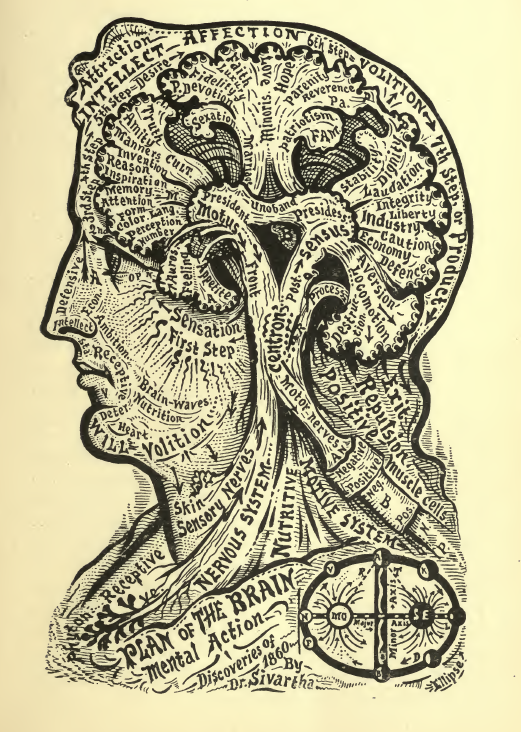
“Plan of the Brain,” illustrated by Alesha Sivartha. (Photo: Internet Archive/Public Domain)
“The most wonderful of all living structures is the human brain.”
This was Alesha Sivartha’s philosophical and scientific proposition in a book he wrote and illustrated, called The Book of Life: The Spiritual and Physical Constitution of Man. Published in 1898, the 152-page abridgment contains a collection of peculiar, hand-drawn brain maps that reveal Sivartha’s even more peculiar interpretation of the human brain’s anatomy. As an avid phrenologist, Sivartha sectioned the brain into a series of compartments, each responsible for certain traits and interests, like religion, intellect, and social status.
The pseudoscience of phrenology dates back to the late 1700s when German physician Franz Joseph Gall proposed that the mind was made up of 27 different mental regions or “brain organs.” Phrenologists would analyze the shape of the skull and measure the bumps and hollows, associating certain areas with behaviors and aptitudes, explains author Manuel Lima in his book Visual Complexity: Mapping Patterns of Information.
Phrenology can sometimes sound like palm reading. For example, Gall ascribed parts of the brain to how much a person loves his or her children, remembers words, is musically gifted, and is even prone to kill.

“Convolutions,” illustrated by Alesha Sivartha. (Photo: Internet Archive/Public Domain)
It wasn’t until a century after Gall that Sivartha came forward with his incredibly detailed (and often confusing) maps. He was fixated with the number 12. In each map he breaks down the brain into 12 different orifices. For instance, in the map “The Model of Society” Sivartha shows a dozen areas of the brain that determine a person’s placement in society: culture and science is at the front of brain, religion near the crown, and childhood at the base or stem. He also believed that there were only 12 kinds of people—your personality was determined by the month in which you were born.

The Model of Society, illustrated by Alesha Sivartha. (Photo: Internet Archive/Public Domain)
In addition to the brain, Sivartha illustrated maps of other parts of the body, such the hand and the nervous system. He believed that large hands belonged to those who are skilled in their work, while a person with small hands made colossal plans, but employed others to execute them. Long, slender hands indicated action, energy, and command, but short, thick, soft hands meant a person was selfish yet warm-hearted.
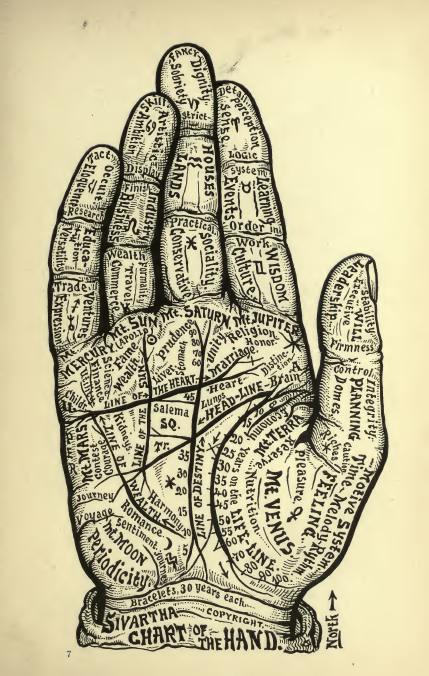
Chart of the Hand, illustrated by Alesha Sivartha. (Photo: Internet Archive/Public Domain)
Like Gall, Sivartha sectioned off the brain into corresponding organs, but he also seemed to understand that the brain is comprised of much smaller units. In The Book of Life he called the human brain the “Tree of Life,” which had a central tube, branches, and cells:
“For the brain is a mass of microscopic fibres or tubules which terminate in cells… A fair estimate gives at least 1,200,000,000 of these cells in each hemisphere of the brain.”
Sivartha’s estimation was a little off. We know today that there are approximately one hundred billion neurons in the brain that are responsible for neurological processes.
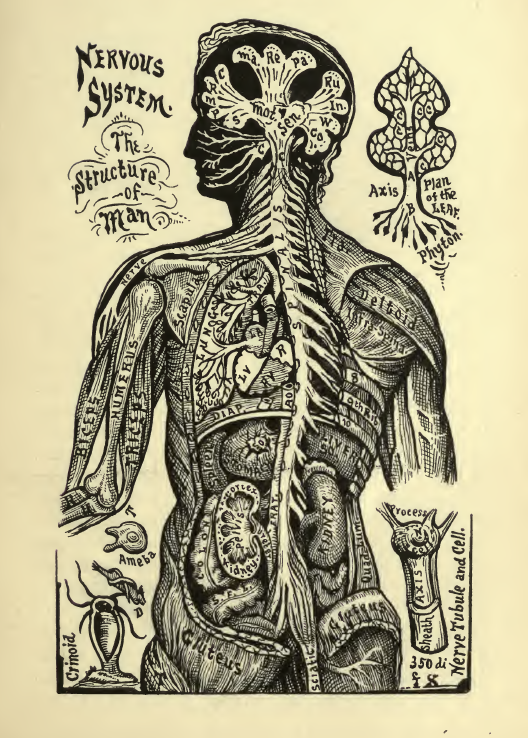 The Nervous System, illustrated by Alesha Sivartha. (Photo: Internet Archive/Public Domain)
The Nervous System, illustrated by Alesha Sivartha. (Photo: Internet Archive/Public Domain) Sivartha’s personal life and title is a bit of a mystery. Some refer to him as a doctor, while others say he was a philosopher. A website hosted by his great-great grandson, Don Ross, states Sivartha was “a medical doctor, artist, lecturer, and a deeply spirited man.” Ross also says that Alesha Sivartha was a pen name for a man named Arthur E. Merton.
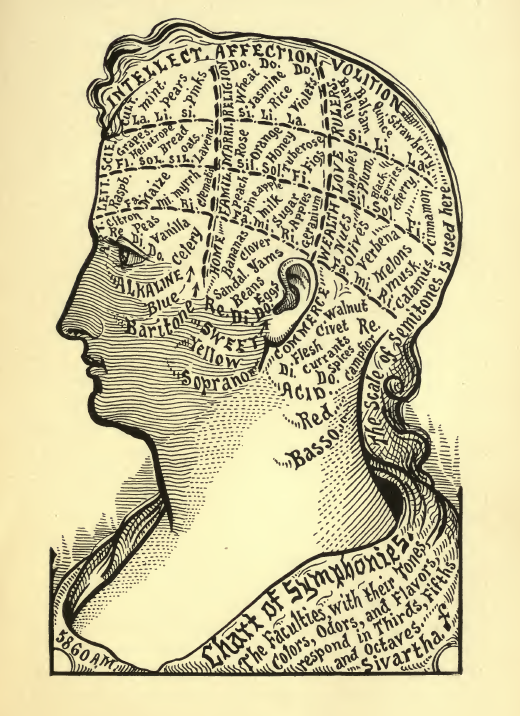
Chart of Symphonies, illustrated by Alesha Sivartha. (Photo: Internet Archive/Public Domain)
At its height during the 1820s to the 1840s, phrenologists believed the pseudoscience was “the only true science of the mind,” although some scholars debate how much the public truly believed in these hypotheses and depictions of the brain. Modern-day science and neurology has discredited phrenology, yet the idea of demarcating the mind lives on through the left and right brain divide. While Sivartha’s brain maps are wild and bizarre, they remain ornate and beautiful pieces of scientific history.
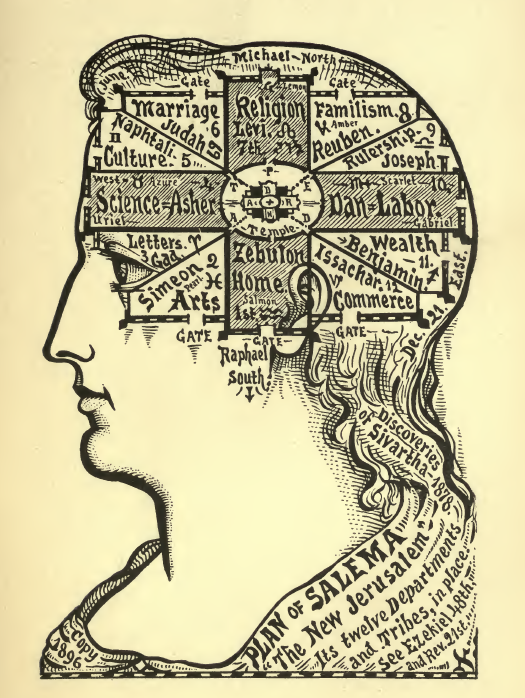
Plan of Salema, illustrated by Alesha Sivartha. (Photo: Internet Archive/Public Domain)
Map Monday highlights interesting and unusual cartographic pursuits from around the world and through time. Read more Map Monday posts.










Follow us on Twitter to get the latest on the world's hidden wonders.
Like us on Facebook to get the latest on the world's hidden wonders.
Follow us on Twitter Like us on Facebook